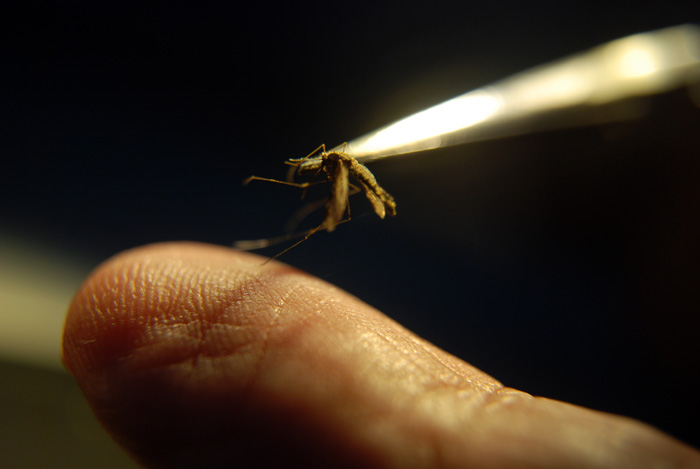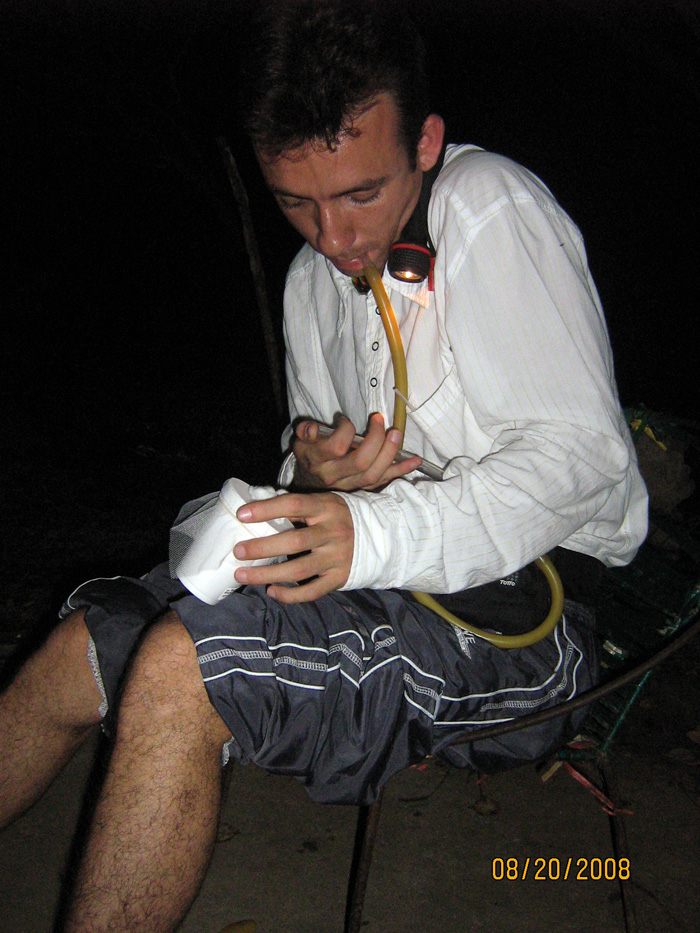The insect experts that discovered the mosquito alert on its profusion, which requires health organizations to take vital measures. This study is an important contribution to world knowledge.
At present, there are 40 to 47 recognized Anopheles (mosquitos) species, among which seven have been incriminated as malaria vectors. Three of them are classified as main transmitters, because they are not only spread on most of the Colombian territory, but in Latin America.
What is peculiar is that, according to studies completed by the Entomology Research Group at the Universidad Nacional de Colombia, in Putumayo, those three vectors are missing. However, this department is classified as high risk for its malaria incidence. Then, what is producing the transmission of the disease in this area"
Starting with this question, a group of scientists, led by Professor Martha Quiñones, began in 2006 a research project sponsored by Colciencias, aiming to establish the role of Anopheles species as malaria vectors, not only in Putumayo, but in Meta and La Guajira.
Four years later, they were able to confirm the existence of a new mosquito variety that was being mistaken for others species, such as Anopheles noroestensis, and An. Evansae. Through molecular techniques, morphologic analysis and aspects of its behavior, the researchers concluded that it was a new species. So far, it is called An. benarrochi B.
Mosquitos without a Visa
The inquiries started in those three frontier areas, because former studies exposed a critical issue: Anopheles species incriminated as important malaria vectors in neighboring countries, such as An. oswaldoi in Brazil, and An. aqualisis in Venezuela, were not yet considered as malaria vectors in Colombia.
"In principle, there is not an apparent reason for an Anopheles species to transmit malaria in an area and to stop doing so after crossing the border," argues Quiñones.
With the help of the area"s health centers, the researchers completed Anopheles captures in those three regions, during several nights and in different seasons between 2007 and 2009. The mosquitos" brood was also identified.
After passing technical and immunological test, the results allowed to identify eleven species in Putumayo.
Appearances can be Deceptive
At first sight, among the eleven species found in Putumayo, An. benarrochi seemed to be predominant. It is very common in Peru, but this discovery was puzzling, because the typical An. benarrochi was already detected in Colombia, but did not carried the Plasmodium infection; in addition, it doesn"t go near people: it prefers animal blood.
On the contrary, the insect found in Putumayo is very aggressive against humans, so much so that its biting rate reaches 202 persons per night. During the analysis it was established that it was infected with Plasmodium vivax (malaria parasite). Hence, researchers were facing, apparently, an identical specimen to the one previously reported, but with different behavior.
Only through genetic analysis, the researches managed to unmask it, because it has a different configuration.
The discovery of the new species, An. benarrochi B, is an important advance because its identification allowed to make it responsible for malaria transmission in Puerto Asís (Putumayo), where the disease"s incidence reaches an Annual Parasitic Index (API) of 20 cases per 1000 inhabitants, which is a high risk for population.
Likewise, in Puerto Leguízamo, the API is of 30 cases, although Quiñones points out that in this municipality the responsibility is shared with An. darling.
"Now, the goal is to find in which regions within the country "such as Amazonas" lives this insect. However, this part of the research will be completed through molecular tests," concludes Professor Quiñones.
 Correo Electrónico
Correo Electrónico
 DNINFOA - SIA
DNINFOA - SIA
 Bibliotecas
Bibliotecas
 Convocatorias
Convocatorias
 Identidad UNAL
Identidad UNAL




